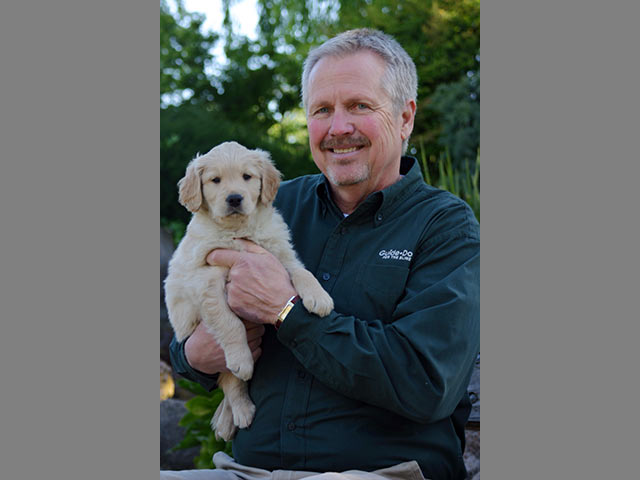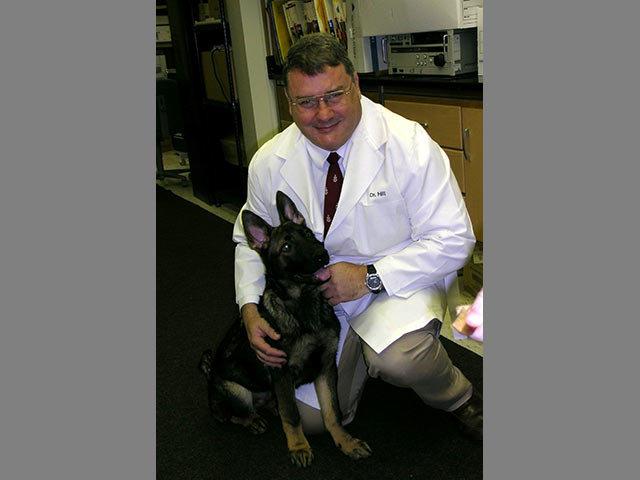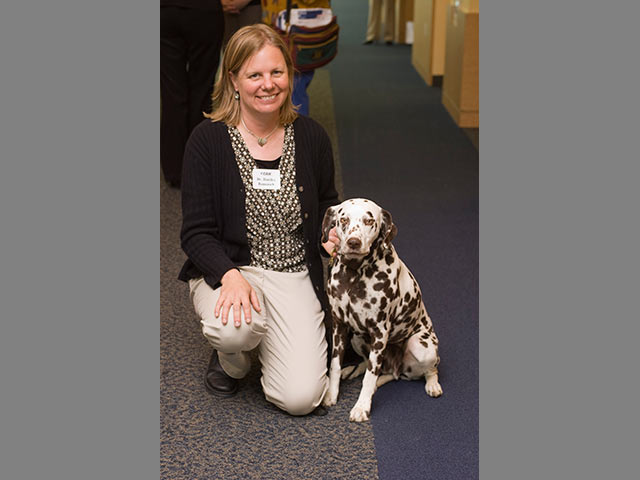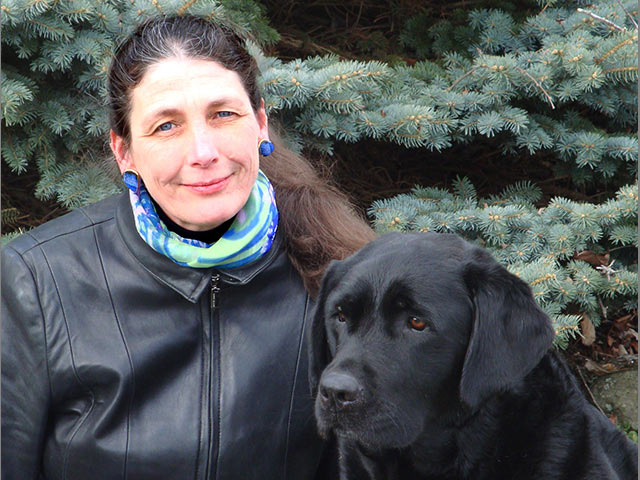In Defense of Purebred Dogs




Months earlier, President Obama had indicated that he was looking at shelter dogs, not purebreds. When he announced his final choice, some suggested that the new president had broken a campaign promise.
Like the first family, many Americans who seek purebred dogs often find themselves enmeshed in a larger social debate about where our dogs should come from. This reveals a long-held idea that there is a sharp dividing line – purebred dogs one side, and shelter dogs, or mixed-breeds, on the other.
But the two groups of dogs, and the people who love them, are not opposites. In fact, the thriving presence of purebred dogs assists mixed-breed dogs and shelter dogs in many essential ways.
Special Partnerships
Experts at Guide Dogs for the Blind, in San Rafael, CA, have bred and trained guide dogs for over 50 years. Their goal is to develop the healthiest, most secure and connecting dogs who not only fulfill a vital role in human-dog teams, but enjoy their work as they move confidently through the world.
Responding to the same pressures the first family felt, Guide Dogs for the Blind had tried a rescue-dog program. Their trainers went to shelters throughout the country looking for dogs with the right attitude. "But it was unsuccessful," explains Brent Ruppel, director of canine community programs. "We didn't have the history of these dogs, information within a pedigree. This caused negative situations for our clients. The day-to-day surprises we enjoy with our pets can be dangerous with guide dogs – prey drive, or object and scent distractions."
On the job, guide dogs need to be focused. They must be acutely attuned to their environment, aware of subtle shifts, and be able to communicate this to their human partners. They also need to be unusually sturdy and long-lived. To assure their dogs have these qualities, guide schools carefully breed dogs to have particular temperament and health traits.
"We're not simply advocating purebred dogs," Mr. Ruppel says. "If that were the case, we wouldn't have tried the shelter program. We start with a need for predictability, and we find that the Labrador Retrievers we breed have the right health and temperament."
The effort to breed dogs that are great for guide work is arduous. For non-profit guide organizations, economics is not the driving force. "Believe me," Mr. Ruppel explains, "our budget would be better if we could use shelter dogs! But from a health perspective, we're better off with a breeding program. We now have nearly eliminated chronic health problems."
While the extensive effort at guide schools has resulted in healthier and more reliable guide dogs, it also has relevance that can be shared with all breeders. The system of effective health tests at Guide Dogs for the Blind is a model breeders can follow in their own efforts to improve the lives of their dogs.
The wider relevance goes beyond health. With their intimate understanding of the canine mind, guide schools have much to share about training and behavior. "Out of necessity," Mr. Ruppel explains, "we've become dog experts. Using clicker training with Labradors, we've developed beneficial techniques that owners of all dogs, including mixed-breeds, can now adapt."
We Are What We Feed
Dr. Richard C. Hill, Waltham Associate Professor of Small Animal Internal Medicine and Clinical Nutrition at the University of Florida College of Veterinary Medicine, is both curious and concerned about the nutritional needs of Greyhounds. He brings strong credentials to the job. As one of the committee members on the National Research Council (NRC) he contributed to new recommendations on canine and feline nutritional requirements, information that influences ingredients in the pet foods we buy.
Dr. Hill has completed several studies of Greyhounds – what they eat, what kinds of physical exercise works best for them, and why. "I wanted to help these dogs," he explains. "Prior to our work, not much had been done to understand Greyhound nutrition."
When exerting themselves enough, both dogs and people build up lactic acid as their muscles consume the supply of oxygen. You know about this from that pain you feel in your arms after carrying something heavy for a while. Dogs experience equivalent sensations.
Dr. Hill believed that looking at lactic acid in dogs could reveal useful insights. "The problem," he says, "is that dogs don't usually exercise long enough to do that. Dogs who do retrieval work or agility just don't go fast enough for long enough for us to see it happen."
Greyhounds are an exception. They build up massive lactic acid when racing.
By studying Greyhounds, Dr. Hill was able to demonstrate some important points that can help this breed. "In contrast to people, dogs do better on high-fat, rather than low-fat diets. Some studies had shown that dogs do better with more protein in their diet, but we found that more protein is not needed in dogs like Greyhounds that exercise for only short periods of time. Studies in sled dogs have shown that dogs are fine with no carbohydrates, as long as you give them enough fat and protein."
Dr. Hill also sees important facts about hydration. "All studies show that we should never add salt to hydration drinks for dogs. They don't sweat, so they don't have extra salt losses. You're better off giving them plain water, perhaps adding a little glucose."
In the future, Dr. Hill plans to work with Corgis, who in key ways are the opposite of Greyhounds. "They have fantastically low energy requirements," he says. "We don't know why. We want to look at them, as well as other similar breeds."
Dr. Hill's work has value for owners who need to better understand what level of exertion, and what type of diet, works best for an active dog, whether that dog comes from a show-winning breeder or from the local animal shelter.
But his discoveries are impossible without access to purebred dogs. "I could not have done the NRC work on nutrition without Greyhounds," Dr. Hill explains. "Because of their consistency and predictability, we could demonstrate results with a small number of dogs that could then have wider application."
Zooming In
Dr. Danika Bannasch, associate professor in genetics in the Department of Population Health and Reproduction at the University of California at Davis School of Veterinary Medicine, is the proud owner of Grommet, a mixed-breed dog. While fully satisfied with Grommet's unknown history, she does have a sense of wonder about what it means to be a dog. This drives her career. "What fascinates me is how some combination of genes gives you a set of traits."
In recent research, Dr. Bannasch examined the presence of higher levels of sulfuric acid in Dalmatians, which makes them more susceptible to forming bladder stones. Dr. Bannasch was able to pull away the shroud covering the reason for this. She isolated the genes, the actual molecules, that are responsible.
Her work was the result of sustained focus on one breed. "Purebreds like Dalmatians give us a simpler way to look at complex problems," she explains. "Once we have that, we can then understand the basis for it."
Her work had immediate importance beyond Dalmatians. "As it turns out, the same problem occurs in Bulldogs and some Black Russian Terriers."
Even more exciting, she says, Dalmatians revealed knowledge crucial to owners of shelter dogs as well. "Once we know the genes, we can test to see if a dog has the condition," Dr. Bannasch says. "We can tell owners exactly what signs to look for. A veterinarian could alert owners that it might be an emergency if the dog ever stops urinating normally."
Looking forward, Dr. Bannasch says that more genetic studies of purebreds can reveal new universal health benefits. She and other scientists would like to get at some of the more complex issues, such as cancer and hip displasia. "These conditions affect purebreds and mixed-breeds equally. By discovering the genes that contribute to these conditions, we can develop treatments that will apply to all dogs, everywhere."
Breeders can use the results of such research to eliminate genetic problems, by testing dogs they wish to breed and choosing the best mates. For shelter dogs, such testing is not possible, since they are bred randomly. But Dr. Bannasch emphasizes that genetic discoveries can offer better treatment, not just elimination, of disease.
Using a real-world example of treatment through genetic knowledge, Dr. Bannasch describes her recent collaboration with a veterinarian caring for a shelter dog with cancer. The veterinarian wondered whether it was an inherited form of the disease, or another kind. The answer would direct the medical options. Having knowledge of cancer genetics through previous work with German Shepherds, Dr. Bannasch could test the dog. "We determined that he didn't have the inherited form. The oncologist was then able to offer the best treatment plan. Our work with the purebred dogs allowed us to help that mixed-breed dog."
Following this example, Dr. Bannasch is enthusiastic about what she and others can accomplish in the future. "If we could find genes for kidney diseases in purebreds, all owners would be able to test if their dogs have a predisposition for it. We could then recommend that veterinarians run kidney-function tests annually to make sure the kidneys look normal. At the first sign of disease, we'd know how to intervene so dogs live happier and healthier lives."
Real-World Testing
After researchers like Dr. Bannasch pinpoint specific, responsible genes, organizations like Optigen, located in Ithaca, NY, develop repeatable tests. Sue Pearce-Kelling, president and manager of Optigen, says her firm uses blood or tissue samples submitted by owners to determine a dog's genetics. From those tests, Optigen reports back on whether a dog has a predisposition to genetic conditions. Breeders use the information when planning a litter of puppies.
One of the most exciting aspects of her work, Ms. Pearce-Kelling explains, is that the tests can be applied across many breeds. Because dogs in the same breed have such similar genes, when a small number of genes in a particular dog are different, it really stands out. Those are the probable culprits for a condition you wish to treat. "Working with purebred dogs gives us predictability, because of known heritage," Ms. Pearce-Kelling explains. "You can see clearly whether you have a dog affected by a condition. That tells us what the mutation looks like. Once we know that, we can quickly detect the presence of the condition in any dog, no matter what the breed is."
Genetic tests are transforming the health and longevity of purebred dogs. There are now approximately 150 available tests. But this number only represents the beginning of the possibilities. "We've grabbed the low-hanging fruit," Ms. Pearce-Kelling says, "the easier conditions. But some of the more important diseases are not that easy to study – like cancer and hip displasia."
Because of the number of genes involved, these more complex diseases will be much harder to tackle, and will require the vast cooperation of owners and breeders. "The predictive value of purebred dogs is important," Ms. Pearce-Kelling explains. "We can't make discoveries with mixed-breed dogs, because we don't know what other factors are having an impact."
But by working with purebred dogs, mixed-breed dogs will benefit from the results.
All Connected
The more scientists reveal about dogs at the genetic level, the more they witness assumed separations melting away. "There are fewer and fewer 'private' diseases in breeds," Dr. Bannasch explains. "Breeds you thought were unrelated actually share the same oddball disorders."
This realization comes only after starting with discoveries about purebreds, then applying the discoveries to mixed-breed dogs. They are all connected.
Going a step further, research is showing that humans also share many of the same underlying genetics, nutritional needs, and diseases as dogs.
This seems appropriate, given that dogs and humans have always been connected. As Mr. Ruppel explains, "Dogs don't exist anywhere except in relationships with people. Dogs and people work together as teams, mutually dependent on each other, giving back in equal amounts. In guide work, people provide love and shelter; dogs also provide love, as well as safety and access to places people could never go without them."
Scientists promise that as time goes on, they will build our store of skills and knowledge to improve the health, training, and everyday care of all dogs, no matter where they come from.
Ms. Pearce-Kelling imagines a day when genes will offer a better understanding of subtle dog nature. "Why does a Setter point? Why does a Border Collie have something like herding OCD? Being able to work with purebred dogs will let us go further. It will allow us to help every dog, and also to just have greater connections with our canine companions."
